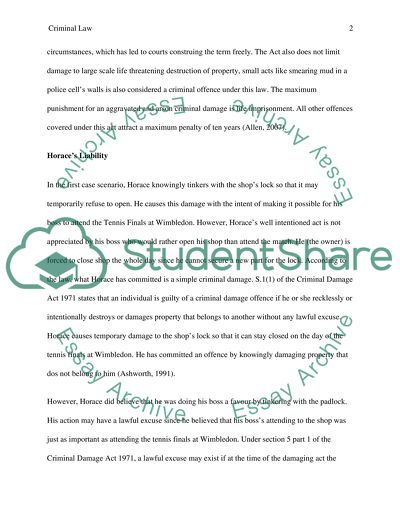Cite this document
(“Criminal Law (Damage to Property) Essay Example | Topics and Well Written Essays - 1500 words”, n.d.)
Retrieved de https://studentshare.org/law/1390847-criminal-law-damage-to-property
Retrieved de https://studentshare.org/law/1390847-criminal-law-damage-to-property
(Criminal Law (Damage to Property) Essay Example | Topics and Well Written Essays - 1500 Words)
https://studentshare.org/law/1390847-criminal-law-damage-to-property.
https://studentshare.org/law/1390847-criminal-law-damage-to-property.
“Criminal Law (Damage to Property) Essay Example | Topics and Well Written Essays - 1500 Words”, n.d. https://studentshare.org/law/1390847-criminal-law-damage-to-property.


